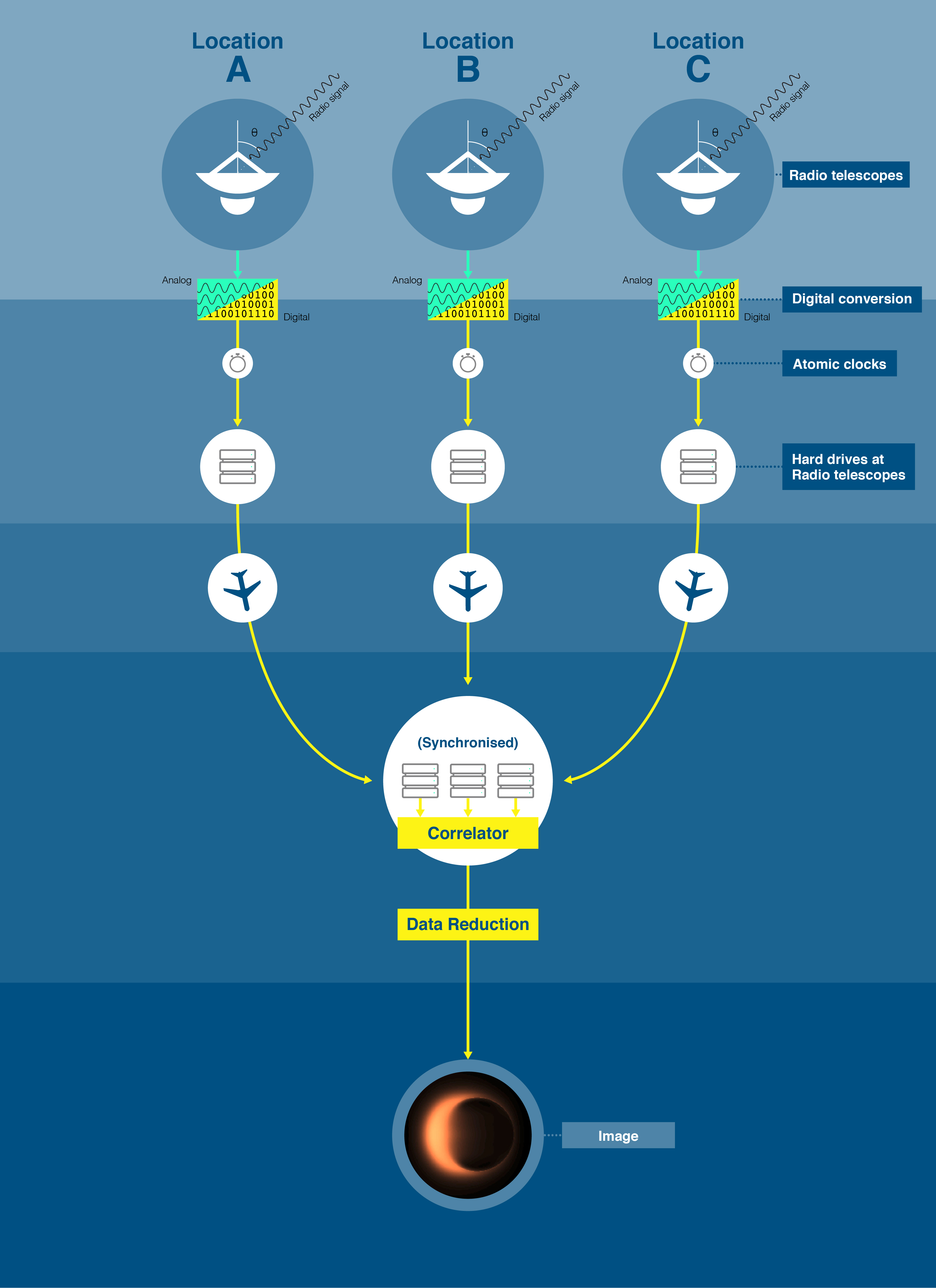|
CLEAN (algorithm)
The CLEAN algorithm is a computational algorithm to perform a deconvolution on images created in radio astronomy. It was published by Jan Högbom in 1974 and several variations have been proposed since then. a chapter from the ''MAPPING'' software manual The algorithm assumes that the image consists of a number of point sources. It will iteratively find the highest value in the image and subtract a small gain of this point source convolved with the point spread function ("dirty beam") of the observation, until the highest value is smaller than some threshold. Astronomer T. J. Cornwell writes, "The impact of CLEAN on radio astronomy has been immense", both directly in enabling grea ... [...More Info...] [...Related Items...] OR: [Wikipedia] [Google] [Baidu] |
Deconvolution
In mathematics, deconvolution is the operation inverse to convolution. Both operations are used in signal processing and image processing. For example, it may be possible to recover the original signal after a filter (convolution) by using a deconvolution method with a certain degree of accuracy. Due to the measurement error of the recorded signal or image, it can be demonstrated that the worse the SNR, the worse the reversing of a filter will be; hence, inverting a filter is not always a good solution as the error amplifies. Deconvolution offers a solution to this problem. The foundations for deconvolution and time-series analysis were largely laid by Norbert Wiener of the Massachusetts Institute of Technology in his book ''Extrapolation, Interpolation, and Smoothing of Stationary Time Series'' (1949). The book was based on work Wiener had done during World War II but that had been classified at the time. Some of the early attempts to apply these theories were in the fields of ... [...More Info...] [...Related Items...] OR: [Wikipedia] [Google] [Baidu] |
Radio Astronomy
Radio astronomy is a subfield of astronomy that studies celestial objects at radio frequencies. The first detection of radio waves from an astronomical object was in 1933, when Karl Jansky at Bell Telephone Laboratories reported radiation coming from the Milky Way. Subsequent observations have identified a number of different sources of radio emission. These include stars and galaxies, as well as entirely new classes of objects, such as radio galaxies, quasars, pulsars, and masers. The discovery of the cosmic microwave background radiation, regarded as evidence for the Big Bang theory, was made through radio astronomy. Radio astronomy is conducted using large radio antennas referred to as radio telescopes, that are either used singularly, or with multiple linked telescopes utilizing the techniques of radio interferometry and aperture synthesis. The use of interferometry allows radio astronomy to achieve high angular resolution, as the resolving power of an interferometer is set ... [...More Info...] [...Related Items...] OR: [Wikipedia] [Google] [Baidu] |
Jan Högbom
Jan Arvid Högbom (born 3 October 1929) is a Swedish radio astronomer and astrophysicist. Education Högbom obtained his PhD in 1959 from the University of Cambridge with Martin Ryle. Career and research Högbom is most well known for the development of the CLEAN algorithm for deconvolution of images created in radio astronomy, published in 1974. This allows the use of arrays of small antennae, generating incomplete sampling data, to effectively simulate a much larger aperture. Högbom was also the first to use Earth rotation synthesis imaging in a small test. These methods pioneered by Högbom are still extensively used and combined, e.g. in the imaging of the central supermassive black hole of the Messier 87 Messier 87 (also known as Virgo A or NGC 4486, generally abbreviated to M87) is a supergiant elliptical galaxy with several trillion stars in the constellation Virgo. One of the largest and most massive galaxies in the local ... galaxy. Awards ... [...More Info...] [...Related Items...] OR: [Wikipedia] [Google] [Baidu] |
Event Horizon Telescope
The Event Horizon Telescope (EHT) is a large telescope array consisting of a global network of radio telescopes. The EHT project combines data from several very-long-baseline interferometry (VLBI) stations around Earth, which form a combined array with an angular resolution sufficient to observe objects the size of a supermassive black hole's event horizon. The project's observational targets include the two black holes with the largest angular diameter as observed from Earth: the black hole at the center of the supergiant elliptical galaxy Messier 87 (M87*, pronounced "M87-Star"), and Sagittarius A* (Sgr A*, pronounced "Sagittarius A-Star") at the center of the Milky Way. The Event Horizon Telescope project is an international collaboration that was launched in 2009 after a long period of theoretical and technical developments. On the theory side, work on the photon orbit and first simulations of what a black hole would look like progressed to predictions of VLBI imaging for the ... [...More Info...] [...Related Items...] OR: [Wikipedia] [Google] [Baidu] |
Radio Astronomy
Radio astronomy is a subfield of astronomy that studies celestial objects at radio frequencies. The first detection of radio waves from an astronomical object was in 1933, when Karl Jansky at Bell Telephone Laboratories reported radiation coming from the Milky Way. Subsequent observations have identified a number of different sources of radio emission. These include stars and galaxies, as well as entirely new classes of objects, such as radio galaxies, quasars, pulsars, and masers. The discovery of the cosmic microwave background radiation, regarded as evidence for the Big Bang theory, was made through radio astronomy. Radio astronomy is conducted using large radio antennas referred to as radio telescopes, that are either used singularly, or with multiple linked telescopes utilizing the techniques of radio interferometry and aperture synthesis. The use of interferometry allows radio astronomy to achieve high angular resolution, as the resolving power of an interferometer is set ... [...More Info...] [...Related Items...] OR: [Wikipedia] [Google] [Baidu] |



